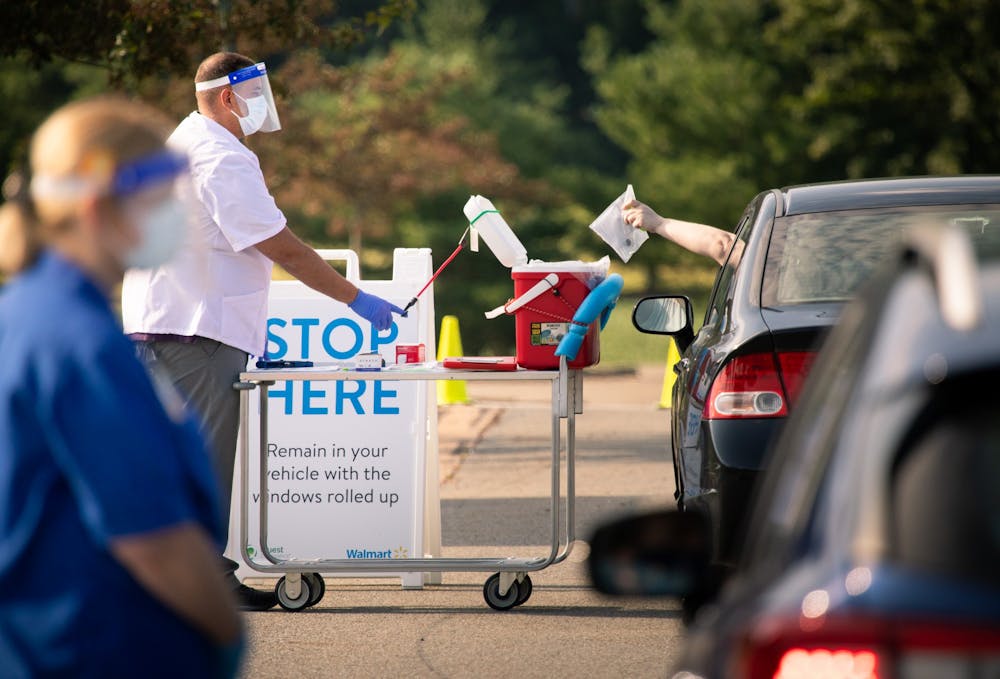In the United States, even viruses discriminate. COVID-19 is making the country’s health gap impossible to ignore. Headlines announcing “Minorities are Disproportionately Dying From Covid-19 at a Younger Age” and “Black and Hispanic Children are Impacted More Severely by Coronavirus, Research Shows” make national news. Highlighting disparities in Americans’ health is an important step in rectifying this inequality. But despite recent media attention given to minorities’ vulnerabilities to COVID, Marshallese Americans’ pandemic plight has failed to garner national, much less campus-wide, attention. We must act now to expand Marshallese access to healthcare.
Before examining Marshallese Americans’ COVID crisis, it is vital to understand the United States’ relationship with the Marshall Islands. Between 1946 and 1958, the United States conducted 67 nuclear tests in the country. If spaced evenly over the twelve-year testing period, a total of 1.6 Hiroshima-sized explosions per day were carried out there. During most of these years, the United States was the administering authority of the Strategic Trust Territory of the Pacific Islands to which the Marshall Islands belonged. As administering authority, it was tasked by the United Nations to promote the well-being of the Marshallese. Instead, the United States used its position of power to test nuclear weapons.
Following the termination of its status as administering authority in 1994, the United States continued its relationship with the Marshall Islands under the Compact of Free Association (COFA). Pursuant to COFA, the Islanders are classified as nonimmigrants to the United States, meaning they can enter and work in the country with just their Marshallese passports. Today, due to high unemployment rates and the effects of climate change on the island nation, about one-third of the Marshall Islands’ population lives in the U.S.
While the Marshall Islands remains COVID-free, Islanders living in the United States have been hard-hit by the disease. Marshallese in Spokane County, Wash., represent one percent of the county’s population but nearly a third of its COVID cases. A report by Washington State, which boasts the largest Marshallese population in the continental United States, found that per capita COVID rates were higher among Pacific Islanders than Hispanics.
Meanwhile in Arkansas, Marshallese account for six percent of COVID cases but only 0.4 percent of the state’s population. A study by the Arkansas Coalition of Marshallese found that Marshallese are 4.5 times more likely to contract COVID than any other racial or ethnic group and died from the disease at a rate 4.5 times higher. Statistics are similarly chilling for Marshallese in other parts of the country.
Health is one key factor making the Marshallese so vulnerable to COVID. Although limited, research into the health of Marshallese American communities shows bleak results. A 2017 study discovered that in a sample of Islanders from Northwest Arkansas, 38.4 percent suffered from Type 2 Diabetes, 41.2 percent had hypertension, and 61.7 percent were obese, compared to 9.3 percent, 29.1 percent, and 34.9 percent of the U.S. population, respectively. Marshallese communities worldwide report startlingly high rates of cancer, which has been attributed to U.S. nuclear testing in the country. The Centers for Disease Control and Prevention lists all four of these ailments as COVID-19 risk factors. The fact that Marshallese tend to be in lower income brackets and are often employed as essential workers further increases their susceptibility to the disease.
Although the factors making the Marshallese so vulnerable to COVID-19 mirror those facing other marginalized groups, unlike many other minorities, the Islanders lack access to Medicare and Medicaid. Historically, they were eligible for the programs until the 1996 Personal Responsibility and Work Opportunity Reconciliation Act stripped them and many other legal immigrants of eligibility. Since then, access to benefits has been restored to most immigrants except for those under COFA. Some states, including Oregon and Washington, have funded varying degrees of healthcare to the Marshallese, but their access to benefits is still meager. Although Americans eligible for Medicare and Medicaid still struggle to afford healthcare, we must not overlook that the Marshallese are systemically excluded from most federal healthcare programs.
When asked about nuclear testing in the Marshall Islands, Former Secretary of State Henry Kissinger allegedly responded, “There are only 90,000 people out there. Who gives a damn?” Regardless of whether he uttered those words, they continue to capture the United States’ attitude towards the Marshallese.

Many Americans, including Princeton students, are unaware of the Marshallese’s plight. As a group with disproportionately high rates of certain chronic conditions, access to Medicare and Medicaid could mean the difference between life and death even during regular times. During a pandemic, restricting Marshallese access to those programs is tantamount to condoning murder.
In November, it is our responsibility to vote for candidates who will ensure that all marginalized groups have full and equal access to healthcare. Only by doing so will we be able to fulfill the University’s informal motto: “in the nation’s service and the service of humanity.”
The upcoming election is a golden opportunity for us to demonstrate to the Marshallese that we do, in fact, give a damn.
Genrietta Churbanova is a first-year from Little Rock, Ark. She can be reached at geaac@princeton.edu.









